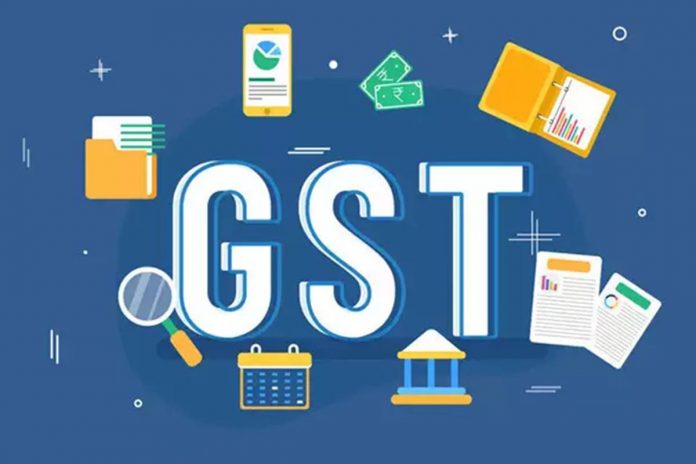This article has been written by Manoj Purohit and has been edited by Oishika Banerji (Team Lawsikho).
This article has been published by Sneha Mahawar.
Table of Contents
Introduction
Before 2017, the people of India used to pay several indirect taxes for every transaction, such as purchasing, selling, manufacturing, retailing, marketing, etc, in the form of Value Added Tax (VAT), excise duty, service tax, central sales tax, entertainment tax, luxury tax, sales tax, etc. Former Union Finance Minister, P. Chidambaram, in his budget speech for 2006-07 broached the concept of ‘Goods and Service Tax’ (GST). On 29th March 2017, the GST Bill was passed by both houses of the parliament, followed by which on 1st July, 2017, the same had come into effect. GST is a single indirect tax proposed to replace all other indirect taxes, thereby reducing the burden of paying different indirect taxes. The introduction of GST facilitated the elimination of the cascading effect of indirect taxation and the concept of double taxation, thereby introducing a uniform regime governing indirect taxation in India. GST has been responsible for pushing the economy a step closer to a common market that involves the free movement of capital and services, making room for doing business in an easier way. This article aims to provide insight as to how GST has had an impact on the Indian economy and deliberates upon the need to revise GST rates and amendments that need to be made.
Impact of GST on the Indian economy
When studying the impact of GST on the Indian economy, it is pertinent to note that both sides of the coin (pros and cons) need to be taken into account. The primary objectives with which GST was introduced are:
- Elimination of the confusion surrounding the number of indirect taxes that were required to be paid by the taxpayers. This also involves the removal of the cascading effect of taxes.
- GST aims to increase the number of taxpayers in the nation, which will help in the development of the nation’s economy.
- The promotion of a corruption-free nation and diminishing tax evasion rates are also counted as objectives of GST.
The introduction of GST had an impact on the Gross Domestic Product (GDP) of the nation. The growth rate of GDP was 8.95%, which was a 15.54% increase followed by a latter decline of 10.33%, 2.72% and 0.34% in 2019, 2018 and 2017, respectively. Key reasons for the growth of the GDP of the nation after the introduction of GST are summarised in the following pointers:
- The various tax rates on a single transaction were removed and a uniform taxation system was introduced by which tax implementation became simplified. It seemed simple across the nation.
- It reduced the cost of transactions. For example, initially, there were more than 10 types of taxes that were levied on a single transaction. People were facing problems and business was not booming because of this.
- After the introduction of GST tax payment got simplified and people were encouraged to take up business by paying a unified tax. Even though the tax amount that was paid before and after GST did not have much difference it felt simpler for people to pay a single tax in place of more than ten types of taxes.
As a result, more goods and services were manufactured in the country leading to an increase in net exports. If a country exceeds its exports it means that the country has a trade surplus with a high level of output of goods from manufacturers by which employment is increased. When the country is exporting more it also initiates the funds flow into the economy thereby contributing to economic growth. This has made foreign exchange rates more favourable.
Positive Impact of GST on the Indian economy
It is significant to know that GST is levied at the stage of supply of goods and services across India, thus, GST is levied on the taxpayer when the goods or services are consumed. There are three types of GST-
- CGST (Central Goods and Services Tax) which is collected by the Central Government on the intrastate sale of goods and services.
- SGST (State Goods and Services Tax) which is collected by the State Government on intrastate sales.
- IGST (Integrated Goods and Services Tax) is collected and shared by both central and state governments when the supply of goods and services is supplied from one state to another. It also applies to imports and exports.
The positive impacts of GST on the Indian economy have been listed hereunder:
- Simplified tax structure: Single tax and easier calculations of the same have made GST provide India with a simple tax structure. The buyer upon paying for the product purchased, gets a clear idea as to what amount of tax he has paid.
- Support for small and medium enterprises: It is to be noted that the GST amount to be paid depends on the annual turnover and size of the firm. This has been a reward for small and medium enterprises.
- More funds for production: GST has been successful in reducing the total taxable income, thereby adding to more funds for production.
- Enhanced operations throughout India: There has been a boost in operation throughout India because of the single unified tax system making it easier for goods transportation across India.
- Increased volume of export: Reduction in customs duty on goods have facilitated a rise in the volume of export. Production units have also been saving money while producing goods following the introduction of GST.
Negative impact of GST on the Indian economy
The negative impacts of GST on the Indian economy have been listed down hereunder:
- Negative impact on the common man: GST being an indirect tax is recovered by means of rising the selling price. This in turn affects middle and lower-middle-class people and therefore has a negative impact on the common man.
- Negative impact of GST on the market: In general, firms continue to face issues with input tax credit systems thereby failing to manage working capital requirements in an effective way. This is what led to GST having a negative impact on the market.
- Negative impact of GST on unemployment: Following the implementation of GST (July-2017), the unemployment rate had risen from 3.39 to 6.06 % during the period July 2017 to February 2018 in India. With business building being easier, self-employment is on rise but only for those who can afford it.
Impact of GST on Consumer Price Index (CPI)
Consumer Price Index or CPI signifies the measure of changes in the price level of a basket of consumer goods and services bought by households. The impact of GST can be calculated by taking into consideration the total CPI. The CPI was expected to be around 3.24% when the Government of India had introduced GST in the nation. The Government assumed that purchasing power of the consumers shall increase because they would be paying only unified tax and not different taxes on goods and services. In reality, the CPI turned out to be 4.61%. By this we can say that the CPI moved up by 1.37%.
But the CPI cannot be considered as the only measure to indicate the effects of GST on the economy as it can also be considered as one of the reasons where the economy’s purchasing power might have decreased. GST has generated a huge income for the Government in direct as well as indirect ways. It is ideal to note that statistics do indicate that the purchasing power of consumers has been affected after the introduction of GST. Thus, inflation rates in the economy are increasing. This might be due to various reasons and not just because of the concept of GST, as it has various advantages for the economy. GST has proved to be beneficial to the economy in various other ways and has proved to be effective to the economy.
Impact of GST on the common man’s pocket
With the introduction of GST in the Indian taxation system, purchasers of goods and services now have to pay more taxes on goods and services they buy. But, the long-term benefits of GST for the common man are plentiful. The decrease of taxes that are payable by consumer goods producers like FMCG and the automotive sector, led to a decrease in commodity prices. This further allowed more consumers to avail its services. A fall in prices is directly proportional to surge in demand thereby boosting the production cycle in terms of profit gain. Both the buyer and the seller in such scenarios get to secure a fair monetary share thereby further contributing to economic growth. Further, a production boost makes room for more employment and an increase in income. With the advent of GST, scope for black money and corruption practices have been relatively curbed thereby securing the common man’s money in India.
Should GST rates be revised
The Government of India has been vested with the authority to revise the rates of GST from time to time according to the conveyance of the people. The need for GST rates to be revised can be taken into consideration on the following products like the daily essentials. Processed food, almonds, preparation of vegetables, nuts, fruits, other parts, ghee, and butter have tax rates of 12% which can be reduced because they are essential for human life. The tax rates on luxuries can be increased because the consumers would not look at the price bands before purchasing luxuries. It can be increased on tobacco as it is harmful to health and is tax-yielding goods.
The new GST rates introduced in India have been categorised into four different groups, namely, 5% GST, 12 % GST, 18% GST, and 28 % GST. The same has been represented in the table hereunder:
| Products | Taxation rates |
| MilkEggCurdLassiUnpacked foodgrains and paneer | 0% |
| SugarPackage PaneerCoffee BeansDomestic LPGSkimmed MilkCashew Nuts | 5% |
| ButterGheeProcessed FoodAlmondsMobile | 12% |
| Hair OilCapital GoodsToothpastePastaComputers | 18% |
| Small carsConsumer Durables (AC & Fridge)Luxury and Sin Items | 28% |
Currently, consumers have to pay more tax on a majority of goods and services they purchase. It is likely that the government by means of taxes, will make more money due to an increase in the number of taxpayers. The Government’s fiscal deficit is also likely to stay in check. Exports would also rise along with the rise of FDI (Foreign Direct Investment).
Conclusion
GST has both positive as well as negative impacts on the economy. It facilitates economic growth by being transparent and creates loss over a few sectors by the increased prices of the commodity but the ease of doing business has been helped by a unified taxation system in the country. Thus, how GST is viewed in terms of the Indian economy depends on person to person.
References
- https://cleartax.in/s/history-of-gst#:~:text=Brief%20history%20of%20GST%20Bill%20and%20GST%20Act%20in%20India,-The%20history%20of&text=The%20Fiscal%20Responsibility%20and%20Budget,introduced%20by%20April%201%2C%202010.
- https://gstcouncil.gov.in/brief-history-gst.https://gstcouncil.gov.in/brief-history-gst
- https://www.macrotrends.net/countries/IND/india/gdp-growth-rate#:~:text=India%20 gdp%20 growth%20rate%20 for,a%200.34%25%20 decline%20form%202017.
Students of Lawsikho courses regularly produce writing assignments and work on practical exercises as a part of their coursework and develop themselves in real-life practical skills.
LawSikho has created a telegram group for exchanging legal knowledge, referrals, and various opportunities. You can click on this link and join:
Follow us on Instagram and subscribe to our YouTube channel for more amazing legal content.
 Serato DJ Crack 2025Serato DJ PRO Crack
Serato DJ Crack 2025Serato DJ PRO Crack










 Allow notifications
Allow notifications



